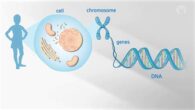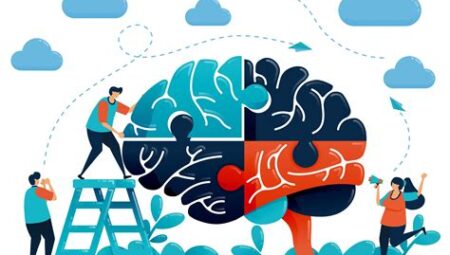Physical therapy is a crucial component of the healthcare system, playing a vital role in helping individuals recover from injuries, manage chronic pain, and improve overall physical function. In this blog post, we will delve into the multifaceted field of physical therapy, examining its history, benefits, educational requirements, specialized techniques, and its role in rehabilitation and pain management.
We will explore the origins of physical therapy, its evolution over time, and the various specializations within the field. Additionally, we will discuss the educational pathways to becoming a physical therapist and the innovative techniques and modalities used in practice.
Furthermore, we’ll highlight the significant impact of physical therapy in managing sports injuries and explore its future trends and innovations. Whether you’re considering a career in physical therapy, seeking treatment, or simply interested in learning more about this dynamic field, this blog post will provide valuable insights into the balancing act of physical therapy.
Table of Contents
What is Physical Therapy?
Physical therapy is a branch of healthcare that focuses on helping people improve their physical function, mobility, and quality of life. It involves the use of various techniques and exercises to help individuals recover from injuries, manage pain, and prevent future problems. Physical therapists work with patients of all ages and with a wide range of health conditions, including neurological, orthopedic, and cardiopulmonary issues.
One of the key principles of physical therapy is to help people regain and maintain their independence. This could involve helping someone recover from a sports injury, regain mobility after a stroke, or manage the symptoms of a chronic condition. Physical therapists also play a crucial role in educating patients about their condition and how to prevent future issues.
Physical therapy treatments can include a variety of modalities such as manual therapy, exercise, ultrasound, electrical stimulation, and heat or cold therapy. These treatment methods are tailored to each individual’s specific needs and goals, and are often used in combination to maximize their effectiveness.
In summary, physical therapy is a vital healthcare profession that helps people of all ages and abilities improve their physical function and quality of life through personalized treatment plans and exercise programs.
History of Physical Therapy
Physical therapy has a rich history, dating back to ancient civilizations where massage and movement were used to treat injuries and improve physical function. The practice of physical therapy underwent significant developments during World War I and World War II, when the need for rehabilitating injured soldiers led to the establishment of formal physical therapy programs. The profession continued to evolve in the 20th century, with advancements in research, technology, and education leading to the establishment of professional associations and accreditation standards.
One of the key milestones in the history of physical therapy was the formation of the American Physical Therapy Association in 1921, which played a crucial role in advocating for the recognition and regulation of the profession. As the demand for rehabilitation services grew, physical therapy became an integral part of the healthcare system, providing treatment for a wide range of physical impairments and disabilities.
Over the years, the scope of physical therapy has expanded to include diverse settings such as hospitals, clinics, sports facilities, and schools. The profession has also embraced evidence-based practice, incorporating the latest research findings and treatment techniques into clinical care. Today, physical therapy continues to play a vital role in helping individuals recover from injuries, manage chronic conditions, and improve their overall quality of life.
The history of physical therapy reflects a journey of resilience, innovation, and dedication to enhancing the well-being of patients. As the profession continues to evolve, its legacy of compassion and commitment to promoting physical health and mobility remains at the core of its practice.
Benefits of Physical Therapy
One of the benefits of physical therapy is its ability to reduce or eliminate pain. Through a variety of techniques such as manual therapy, electrical stimulation, and ultrasound, physical therapists can help patients manage their pain and improve their overall quality of life. In addition, physical therapy can also help improve mobility and range of motion, making it an important part of the recovery process for individuals who have suffered from injuries or surgeries.
Another key benefit of physical therapy is its role in preventing injuries. By working with a physical therapist to develop a personalized exercise program, individuals can improve their strength, flexibility, and balance, reducing their risk of injury in the future. This is especially important for athletes and individuals who are physically active and want to maintain their performance and overall well-being.
Furthermore, physical therapy can play a crucial role in managing chronic conditions such as arthritis, diabetes, and heart disease. By incorporating physical activity and specialized exercises into the treatment plan, physical therapists can help individuals manage their symptoms and improve their overall health. This can lead to a decreased reliance on medication and a better quality of life for those living with chronic conditions.
Lastly, the benefits of physical therapy extend to mental health as well. Engaging in physical activity and working with a physical therapist can have a positive impact on mental well-being, reducing stress and anxiety, and improving mood and self-esteem. This holistic approach to health and wellness makes physical therapy a valuable tool for individuals looking to improve their overall well-being.
Educational Requirements for Physical Therapists
Physical therapists play a crucial role in helping individuals recover from injuries and improve their overall physical well-being. To become a successful physical therapist, one must meet specific educational requirements to gain the necessary skills and knowledge for this profession.
Prospective physical therapists must first earn a bachelor’s degree in a related field such as biology, kinesiology, or exercise science. Following the completion of a bachelor’s degree, individuals must further their education by obtaining a Doctor of Physical Therapy (DPT) degree from an accredited program. This typically involves three years of focused coursework and clinical experience.
Additionally, aspiring physical therapists are required to pass the National Physical Therapy Examination to become licensed practitioners. This rigorous examination tests their knowledge and competency in various areas of physical therapy, ensuring that they are well-equipped to provide quality care to patients.
Continuing education is also an essential component of maintaining licensure as a physical therapist, as it allows professionals to stay updated on the latest advancements and best practices in the field. By meeting these educational requirements, physical therapists can embark on a fulfilling career dedicated to improving the lives of others through rehabilitative care.
Techniques and Modalities Used in Physical Therapy
Physical therapy involves a wide range of techniques and modalities aimed at improving mobility, relieving pain, and restoring function to individuals with physical impairments or disabilities. One of the most commonly used techniques in physical therapy is manual therapy, which includes joint mobilization, manipulation, and soft tissue mobilization to improve movement and reduce pain.
Another important modality used in physical therapy is therapeutic exercise, which focuses on strengthening, stretching, and conditioning muscles to improve overall function and reduce the risk of injury. This may include exercises such as resistance training, balance and coordination exercises, and flexibility exercises tailored to the individual’s specific needs.
Modalities such as ultrasound, electrical stimulation, and heat or cold therapy are also commonly used in physical therapy to help reduce pain, inflammation, and muscle spasm, and to promote tissue healing. These modalities can be used in conjunction with other treatment techniques to enhance the overall effectiveness of the therapy program.
Overall, the combination of these various techniques and modalities allows physical therapists to create individualized treatment plans tailored to each patient’s unique needs and goals, helping them to achieve optimal outcomes and improve their quality of life.
Specializations Within the Field of Physical Therapy
Physical therapy is a diverse field with many different areas of specialization, each focusing on specific patient populations or types of injuries. One common specialization within the field is orthopedic physical therapy, which deals with musculoskeletal injuries and conditions. This can include everything from post-operative rehabilitation to treating chronic conditions like arthritis or tendonitis.
Another specialization is pediatric physical therapy, which focuses on working with children who have developmental delays, genetic disorders, or injuries. These therapists are trained to provide age-appropriate care and help children reach their full potential in terms of movement and function.
Neurological physical therapy is yet another specialization, focusing on patients with disorders or injuries affecting the nervous system. This can include conditions like stroke, spinal cord injuries, or traumatic brain injuries, and often involves working to improve mobility and balance.
Finally, there are also specialized areas like cardiovascular and pulmonary physical therapy, which focus on rehabilitating patients with heart or lung conditions. These therapists may work with individuals recovering from heart attacks, surgery, or chronic respiratory conditions.
The Role of Physical Therapy in Rehabilitation
Physical therapy plays a vital role in the rehabilitation of individuals who have suffered from injuries, illnesses, or surgeries. It is a healthcare profession that aims to help patients regain movement, strength, and function, as well as reduce pain. Physical therapy uses a variety of techniques and exercises to improve mobility and restore the normal functioning of the body. Patients undergoing rehabilitation often work with a physical therapist to create personalized treatment plans tailored to their specific needs and goals.
One of the primary goals of physical therapy in rehabilitation is to help patients recover from surgery or injuries and regain their independence. Whether a person is recovering from a broken bone, a stroke, a cardiac event, or a sports injury, physical therapy can play a crucial role in the recovery process. Through targeted exercises and hands-on techniques, physical therapists can help patients strengthen weakened muscles, improve balance and coordination, and restore mobility.
In addition to promoting physical recovery, physical therapy also focuses on reducing pain and preventing future injuries. Physical therapists often use modalities such as heat, ice, ultrasound, and electrical stimulation to manage pain and facilitate healing. They also educate patients on proper body mechanics and ergonomics to prevent re-injury and promote long-term wellness.
Furthermore, physical therapy in rehabilitation involves collaborating with other healthcare professionals, such as physicians, nurses, and occupational therapists, to ensure comprehensive and coordinated care for the patient. Physical therapists play a critical role in the interdisciplinary team, providing input on the patient’s progress, developing effective treatment plans, and adjusting interventions as needed to achieve optimal outcomes.
Physical Therapy’s Contribution to Pain Management
Physical therapy plays a crucial role in the management of pain, offering non-invasive and holistic treatments for individuals suffering from acute or chronic pain. Through the use of physical therapy techniques such as manual therapy, exercise, and modalities like ultrasound and electrical stimulation, physical therapists are able to address the root causes of pain and provide relief to patients.
One of the significant contributions of physical therapy to pain management is the emphasis on restoring and improving physical function to reduce pain levels. By targeting specific areas of the body affected by pain and implementing personalized treatment plans, physical therapists help patients regain strength, flexibility, and mobility, ultimately reducing their reliance on pain medication.
Another important aspect of physical therapy’s role in pain management is the focus on patient education. Through educating individuals about posture, body mechanics, and lifestyle modifications, physical therapists empower their patients with the knowledge and tools to manage their pain more effectively on a long-term basis.
Overall, physical therapy is a valuable and sustainable approach to pain management, offering patients a way to improve their quality of life without the need for invasive procedures or heavy reliance on medication.
Physical Therapy for Sports Injuries
Physical Therapy for Sports Injuries involves the treatment and rehabilitation of athletes who have sustained injuries during training or competition.
It focuses on helping athletes recover from injuries such as sprains, strains, fractures, and dislocations, as well as preventing recurring injuries through strengthening and conditioning programs.
Physical therapists use a variety of techniques and modalities such as ultrasound, electric stimulation, and manual therapy to help athletes regain strength, flexibility, and range of motion in the injured area.
They also work closely with sports medicine physicians and orthopedic surgeons to develop personalized treatment plans and ensure that athletes can safely return to their sport.
Future Trends and Innovations in Physical Therapy
In recent years, the field of physical therapy has undergone significant advancements and innovations, paving the way for new trends that are shaping the future of the profession. One of the most notable trends is the integration of technology in physical therapy practice. With the development of virtual reality and wearable devices, physical therapists can now use these tools to enhance patient rehabilitation and recovery.
Another important trend is the emphasis on personalized treatment plans. As our understanding of the human body and its unique response to therapy deepens, physical therapists are able to tailor their interventions to the specific needs of each individual patient, leading to better outcomes and improved patient satisfaction.
Furthermore, the use of telehealth and remote monitoring is becoming more prevalent in the field of physical therapy. This allows therapists to provide ongoing support and guidance to patients from a distance, making it more convenient for individuals to access the care they need.
Finally, there is a growing focus on preventive care in physical therapy. As the importance of proactive healthcare continues to gain recognition, physical therapists are playing a key role in helping individuals prevent injuries and manage chronic conditions through exercise, education, and lifestyle modifications.






